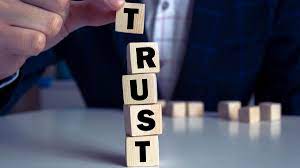
Trust Measurement: How to Measure Smarter
sumanj
- 0
Trust is in the air. It seems that everything you read and every speech you hear refers to trust. We need it, we don’t have it and we wonder how to get it back. I’ve been researching, thinking and writing about trust for a long time, before trust became trendy. Trust is an intangible which we all agree is fundamental to relationships. It is also, however, one of the things with which we struggle. We know it’s important but we aren’t sure how we can ensure we don’t lost it. We are certainly not clear about how to measure trust.
When we look at measuring trust, we enter murky waters. We measure in order to bring certainty to our initiatives. Certainty helps to reduce anxiety about the unknown and and provides us with some degree of control. It provides support (or not) for our decisions.
This is especially important when it comes to with dollars invested in learning and development. Leaders want to know that their investment in L&D is worthwhile; that there is a return.
Trust seems to be amorphous; hard to define, hard to pin down. In discussions with clients who acknowledge the importance of trust and their need to maximize trust in their organization, we invariably come around to discussing trust measurement. When I am discussing an intervention in their organization which will help them improve trust, they want to know how I can reassure them that my program works. How will they know that what I am proposing will result in better outcomes? What type of trust measurement can I offer which can give them the certainty of a return on their investment.
These are tough questions to answer because measuring trust is about measuring changes in attitudes and behaviours. The challenge is how do you measure the effectiveness of a program when you can’t control for all factors. For example, the coachability of participants is a critical element in the success of a change program. How open are participants to listening and to making changes? Some of the questions we would ask concern the organizational support systems; Are there organizational supports in place to reinforce the learning? Does the organizational culture and structure support a trust-based culture? If these basic issues have not been addressed, then the program does not have an opportunity to succeed.
My good friend and colleague, Dr. Dean Spitzer, has written what I view as the best book on the subject of Performance Measurement. In his chapter on Transformational Measures, Dr. Dean issues the following cautions.
1. Beware of metricizing. Dr. Dean cautions us not to adopt a pure economic view of whatever it is we are measuring. When we take an economic approach, we are treating measurement as a pure cost analysis when, in fact, these types of measures can be misleading. Trust measures are about behaviour change which, if successful, results in improved individual and organizational improvement. However, if we are looking at a direct and immediate correlation between program cost and economic improvement, we may be disappointed. Behaviour change takes time and isn’t always noticeable at first. Trust is based on reciprocity and, as such, depends on the cooperation of the other person. When you change your behaviour, the other person may require time to accept and adjust to your new behaviour. Therefore, trust measurement that doesn’t take this into account will be unable to demonstrate positive economic results.
2. Search for new truths. Be cautious that measurement does not represent ‘the truth’ but is a ‘search for truth’. Organizations exist with mental models which sometimes get stuck in a historical reality which is no longer valid. Trust measurement, by its nature, often represents multiple mental models. As my research found, trust is contextually based and means different things to people. Therefore, measurement cannot represent all these meanings. It can, however, bring us closer to an understanding of the different meanings which exist in an organization. Trust measurement helps explain what managers often refer to as ‘resistance to change’. I have found that resistance isn’t to change itself but to a new context which holds little meaning to an individual or group of individuals in the organization. Measurement can uncover these differences and open the conversation to different ways to view organizational change.


